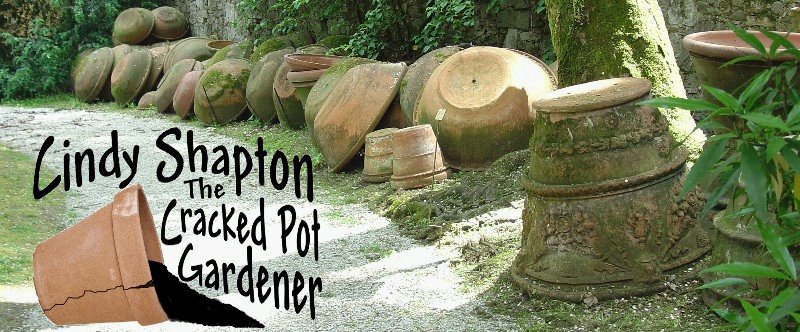 Basil – Keeps flies away. Grow pots of plants around the patio, dry and powder leaves to use as a dust to discourage flies and try it on tomato plants to discourage horn worms. Make a strong tea and spray plants in kitchen garden to help keep Colorado bean beetles away.
Basil – Keeps flies away. Grow pots of plants around the patio, dry and powder leaves to use as a dust to discourage flies and try it on tomato plants to discourage horn worms. Make a strong tea and spray plants in kitchen garden to help keep Colorado bean beetles away.  Bay – Drop a leaf in containers before storing dried veggies and fruit or flour, cornmeal to keep bugs out. Scatter bay leaves on cupboard and pantry shelves.
Bay – Drop a leaf in containers before storing dried veggies and fruit or flour, cornmeal to keep bugs out. Scatter bay leaves on cupboard and pantry shelves.Dry and powder leaves to use like an insecticide in the kitchen garden. Chases ladybugs away when leaves are placed at their point of entry into the house.
Borage – Brew a strong tea with the leaves, strain and spray leaf eating bugs.
Catnip – Grow near entryways to discourage ants. Dry and powder catnip leaves then dust around door frames and windows for ants and sprinkle on veggies for flea beetles. Brew catnip leaves into a strong mosquito-cide, strain (unbleached coffee filters work great) and spray the tea on the yard and garden.
Cayenne peppers – Carefully grind peppers to a fine powder and sprinkle around windows and doors where you see ant trails and on garden plants early in the morning to keep rabbits away. Drop whole dried pepper in containers of beans and grains to keep weevils and other bugs out.
Garlic – Discourage deer from eating your garden for dinner; sprinkle dried, powdered garlic on plants and around perimeter of garden. Soak cloves in water overnight to make a tea to spray plants and garden to help with deer control and add other herbs to make home-made mixtures to stop bugs in their tracks.
 Lemon balm – Rub a handful of lemon balm on your picnic table (and you) to send biting bugs packing. Dry and powder leaves to dust veggie plants to confuse would be pests.
Lemon balm – Rub a handful of lemon balm on your picnic table (and you) to send biting bugs packing. Dry and powder leaves to dust veggie plants to confuse would be pests.Lavender – Moths, ticks and flies don’t like this herb. A spring in the bird bath may keep mosquito larvae out. Dried flowers in the closet or drawers keeps chases bugs away.
Lemon grass – Contains citronella…crush the corms (bulb like base of plant) and rub on skin or make a tea from the stems to spray mosquitoes.
Mint – Scatter dried peppermint leaves in kitchen cupboards to make mice run back outside. Use the dried powdered leaves to dust veggies for flea beetles.
Pennyroyal - Make a strong tea to spray on yourself and your pets to keep fleas, ticks and other biting critters away. Roll leaves in a bandana and tie around your pet for a chemical free flea and tick collar.
Rosemary – A strong tea spritzed on your pets between bathes will help control fleas. Throw some spring on the grill to flavor food and smoke out mosquitoes.
Wormwood – Spray a strong tea from the leaves to kill cabbage worms and flea beetles (top and bottom of plant leaves). Pour 2 cups boiling water over 2 cups leaves. Cover and let steep for an hour or two, strain and add 4-8 cups of tap water before spraying plants.
Next time some pest is ‘bugging’ you try herbs from the garden for a natural solution.
Here is a simple recipe for herbal concoctions to kill, stunt and discourage leaf sucking, chewing, egg laying, no-good pests!
Herb infusions for pest control:
This is basically a strong tea…pour 2 cups boiling water over ½ cup of minced (garlic or hot peppers) or herb leaves; i.e. basil, chives, wormwood, etc. Let stand overnight, strain through cheesecloth or an unbleached paper coffee filter before transferring to sprayer.
Use gloves and caution when working with hot peppers. I use a food processor to grind up hot peppers to keep from getting any on my hands. Dried peppers and herbs can be ground for use (1/3 less if dried) and a good idea to have on hand when needed early in the season.
A tablespoon or two of Tobasco sauce can be added to water as a spray or in combination with herbs if mincing your own hot peppers makes you cringe or you are in a hurry.
Add a teaspoon of dish-soap (Ivory liquid works well) and/or olive oil to homemade bug control mixes for an added kick and to help it stick to leaves.



 I like to use different varieties throughout my landscape to provide a long window of blooms for the bees. Thyme does well in pots, I add it to my kitchen pot gardens.
I like to use different varieties throughout my landscape to provide a long window of blooms for the bees. Thyme does well in pots, I add it to my kitchen pot gardens.


